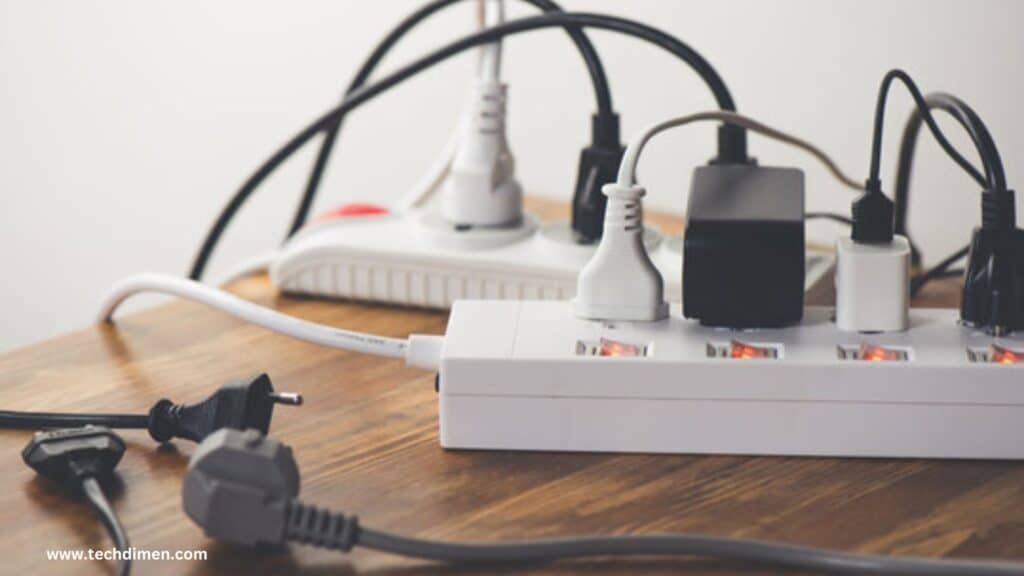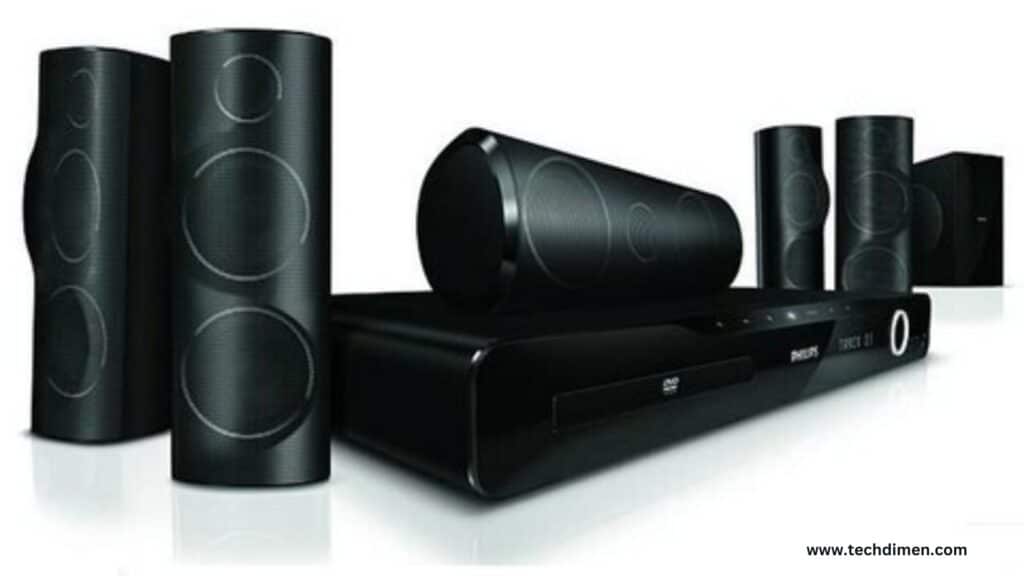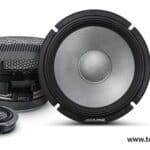A home theater power manager is more than just a fancy power strip. It’s a device that plays a crucial role in delivering clean, consistent power while shielding your expensive entertainment system from surges, voltage fluctuations, and electrical noise. Whether you’re setting up a high end AV room or just want to protect your gear, understanding how these devices work can save you money, improve performance, and offer peace of mind.
Why Power Management Matters in a Home Theater
A high performance home theater system demands clean power. But most homes deal with dirty electricity that includes voltage drops, interference, and unexpected power surges. Over time, these problems damage your gear and compromise audio and video quality. That’s where a power manager becomes indispensable. It provides surge protection, noise filtration, and voltage regulation to ensure your setup works smoothly and safely.
What Does a Home Theater Power Manager Do?
A home theater power manager combines several functions into one cohesive unit. It filters out electrical noise that can lead to buzzing speakers or distorted video. It also offers surge protection, which shields your system from sudden voltage spikes. Additionally, it regulates voltage levels to prevent damage caused by dips or surges. Some models even manage how your devices power up and shut down, helping avoid electrical overload when multiple components are activated at once.
Dirty Power and Its Impact on Performance

Dirty power includes any unwanted electrical signals or variations in your home’s supply. It often comes from outdated wiring, nearby heavy duty machines, or overloaded circuits. When such unstable electricity reaches your AV equipment, it leads to sound distortion, visual glitches, and premature wear on devices. A quality power conditioner removes these disturbances to preserve performance and longevity.
How Clean Power Improves Audio and Video
Clean power enhances performance significantly. In audio systems, this means lower background noise, clearer dialogue, and more accurate bass response. For video systems, the benefits include sharper images and smoother motion without flickers. Industry experts and audio engineers routinely confirm noticeable improvements when switching to systems equipped with noise filtration and voltage regulation.
Who Really Needs a Power Manager

Anyone with a significant investment in audio-visual equipment should consider using a power manager. If you live in an area prone to power instability or have noticed interference in your system, a power manager can make a real difference. Audiophiles, serious movie enthusiasts, and dedicated gamers benefit the most. However, even casual users gain peace of mind by extending the lifespan of their equipment and avoiding costly damage.
Differences Between Power Manager, Surge Protector, and Power Conditioner
It’s easy to confuse these terms, but they serve different purposes. A surge protector guards against short term voltage spikes. A power conditioner takes it further by also filtering out electrical noise. A home theater power manager combines both of these functions and adds voltage regulation and sequencing to provide full spectrum protection and performance optimization. For high performance setups, only a complete power manager provides the necessary control and protection.
Should Every Device Be Plugged Into a Power Manager

Not every device in your home theater setup requires clean, filtered power. Components like AV receivers, amplifiers, projectors, high end streamers, and turntables benefit most from power management. These devices are sensitive to power fluctuations and need protection. On the other hand, items such as LED lights or smartphone chargers don’t need to be connected to a power manager. Saving these ports for critical devices ensures optimal use.
Additional Benefits You Might Not Expect
Beyond just power quality, a power manager can help improve the physical setup of your system. With a structured back panel and labeled outlets, it naturally reduces cable clutter and keeps your entertainment area organized. It also enhances safety by preventing outlet overloading and decreasing the risk of electrical fires. Internal circuit protection also ensures that your equipment isn’t subjected to unnecessary wear from inconsistent electricity.
Do You Need a Dedicated Circuit?
For those with advanced systems, running a dedicated line from your main breaker box directly to the home theater room can drastically reduce electrical noise and cross interference. While this adds to installation cost, it complements the function of a high end power manager. Together, they create an ideal foundation for a truly high performance AV environment. That said, many users experience excellent results with just a good power manager.
How Much Should You Spend on a Power Manager?
Your budget should align with the value of the equipment you’re protecting. Basic systems may only need a model in the $100 to $200 range. Enthusiast setups benefit from mid range units priced between $250 and $500. High end or professional installations may require premium models costing anywhere from $600 to $1,200. These premium devices offer advanced noise filtration, stronger surge protection, and more accurate voltage regulation. Think of it as insurance if your equipment is worth thousands, spending a few hundred on protection is a wise move.
Best Home Theater Power Managers in 2025
As home theater systems become more advanced, the need for clean, consistent power has become more critical than ever. In 2025, the market offers several standout power managers designed to protect, stabilize, and enhance your audio visual experience. Among the best options available, three brands rise to the top: Panamax, Furman, and AudioQuest. Each offers unique technology that caters to specific user needs from casual enthusiasts to dedicated audiophiles. Let’s dive into the top rated power managers that are setting the standard this year.
Panamax MR4300
Built for Everyday Home Theater Owners
The Panamax MR4300 continues to lead the mid range category with its dependable performance and affordability. Designed specifically for home theater systems, it delivers reliable surge protection, effective noise filtration, and this time voltage monitoring. Unlike generic surge strips, the MR4300 includes automatic voltage monitoring that shuts down connected equipment if unsafe voltage conditions are detected.
One of the major benefits of the MR4300 is its sequential startup feature, which ensures your components power on in a safe, staggered order. This helps protect sensitive electronics like amplifiers and receivers from sudden energy spikes. It also prevents power overload, which is a common issue when turning on all equipment at once.
Equipped with nine well spaced outlets, this power manager is ideal for typical entertainment setups. It also includes protection for coaxial and LAN connections, shielding your system from surges that may enter through cable lines or Ethernet. With a front panel voltmeter display, users can view this time input voltage and know exactly what their system is receiving from the grid.
For users who want a mix of performance, practicality, and price, the MR4300 is one of the most dependable options available. It’s well suited for living rooms, media rooms, and mid sized home theater systems where protection and functionality are essential.
Furman Elite-15 PFi: Advanced Conditioning for High Powered Systems
Designed for Audiophiles and Professionals
The Furman Elite-15 PFi is a premium-grade power conditioner that excels in both performance and protection. Used widely in professional audio environments, this unit brings studio level power management to home theater setups. It’s ideal for systems that require consistent voltage, clean power, and high output with minimal interference.
This model features Furman’s proprietary Power Factor Technology, which stores energy internally and releases it when high-current components demand more power. This eliminates the risk of dynamic compression, ensuring that amplifiers and subwoofers deliver full performance without distortion or lag.
In addition to surge protection, the Elite-15 PFi includes LiFT, or Linear Filtering Technology, which filters out AC line noise across a wide range of frequencies. This significantly improves the clarity of both audio and video output. Whether you’re watching a high definition film or listening to a detailed music track, you’ll notice an improvement in signal integrity.
Unlike lower-tier models that may degrade after a surge, Furman’s non sacrificial surge suppression allows the unit to recover without damage. It also features Extreme Voltage Shutdown, which immediately disconnects equipment if voltage exceeds safe levels. This makes it particularly effective in areas with unstable power or frequent storms.
With twelve well-isolated outlets, this power conditioner provides clean, stable energy to all parts of your AV system, from receivers and amplifiers to streamers and media players. For those building high performance home cinemas or multi-zone audio setups, the Elite-15 PFi delivers peace of mind and top tier performance.
AudioQuest Niagara 1200
Engineered for Audiophile Grade Systems
If you’re looking for refined power conditioning in a space-saving design, the AudioQuest Niagara 1200 offers a compelling solution. Though compact in size, it brings high-end noise filtration and surge protection to any home theater or two-channel audio setup. It’s especially favored by audiophiles who value soundstage depth, clarity, and tonal purity.
The Niagara 1200 incorporates ultra-linear noise dissipation and ground noise isolation technology. This helps eliminate subtle distortions and electrical noise that are often introduced by poor power quality. As a result, even lower-level details in music and film become more audible and precise.
Unlike some larger rack-mounted units, the Niagara 1200 is small enough to fit behind furniture or on a shelf, making it ideal for minimalist setups. Despite its size, it includes high current outlets designed to handle power-hungry gear like amplifiers and powered subwoofers. These outlets provide unrestricted energy flow, ensuring dynamic range and transient response are fully preserved.
The unit’s non-sacrificial surge protection is another major advantage. Instead of burning out after a major voltage spike, it absorbs and redirects the excess energy without damaging the circuitry. This means greater longevity and reliability over time.
For users with high resolution gear and finely tuned listening spaces, the Niagara 1200 delivers measurable improvements. It’s best suited for stereo systems, audiophile rigs, and compact home theater setups where power cleanliness is as important as physical space.
Which Power Manager Should You Choose
Selecting the best home theater power manager in 2025 depends largely on your system’s complexity, budget, and performance goals. If you’re building a mid tier setup and want a solid mix of safety features and performance, the Panamax MR4300 offers a dependable and cost effective solution. If you require professional level voltage regulation, isolation, and power factor correction, the Furman Elite-15 PFi stands out as a true powerhouse for demanding setups. Meanwhile, users focused on maximizing sound clarity in tight spaces will find the AudioQuest Niagara 1200 delivers exceptional results in a compact, elegant form.
Each of these models supports the core pillars of modern power management: surge protection, voltage regulation, and noise filtration. More importantly, they help to protect home theater systems from unpredictable grid behavior, voltage spikes, and electrical surges all while enhancing the clarity, precision, and performance of your AV components.
What Is a Home Theater Power Manager Quick Comparison
| Device | Main Purpose | Includes Surge Protection | Filters Noise | Regulates Voltage |
|---|---|---|---|---|
| Power Manager | Full power control for AV systems | Yes | Yes | Yes |
| Surge Protector | Basic surge defense | Yes | No | No |
| Power Conditioner | Clean power for audio/video gear | Sometimes | Yes | Limited |
| UPS (Battery Backup) | Power backup during outages | Yes | No | Basic |
FAQs
What is the main purpose of a home theater power manager?
A home theater power manager protects your AV equipment from electrical surges, voltage spikes, and dirty power. It also improves performance by delivering clean, consistent power through filtration and voltage regulation.
Is a power manager the same as a surge protector?
No. While both offer surge protection, a power manager includes additional features like noise filtration, voltage regulation, and power sequencing. A surge protector alone doesn’t improve sound or video quality the way a power manager does.
Does a home theater power manager affect sound quality?
Yes, it can. By filtering out electrical noise and stabilizing voltage, a power manager can reduce hums, buzz, and interference in your audio system. This leads to cleaner, more accurate sound reproduction.
Do I need a power manager if I already use a UPS?
Not necessarily. A UPS provides backup power during outages but usually lacks advanced noise filtering and voltage regulation. For optimal AV performance, a power manager is better suited for filtering and managing power quality.
Can I plug all my home theater devices into one power manager?
It depends on the unit’s capacity and number of outlets. Most power managers are designed to handle AV components like receivers, amplifiers, projectors, and streaming devices. Avoid overloading the unit, and don’t daisy chain multiple devices unless specified safe by the manufacturer.
Final Thoughts
A home theater power manager is essential for anyone looking to protect and enhance their audio visual investment. Beyond guarding against electrical surges and voltage spikes, it significantly improves sound and picture quality by delivering clean power. Whether you’re a casual viewer or a seasoned AV enthusiast, investing in the right power manager adds value, security, and reliability to your home theater system.

Jhon AJS is a tech enthusiast and author at Tech Dimen, where he explores the latest trends in technology and TV dimensions. With a passion for simplifying complex topics, Jhon aims to make tech accessible and engaging for readers of all levels.







